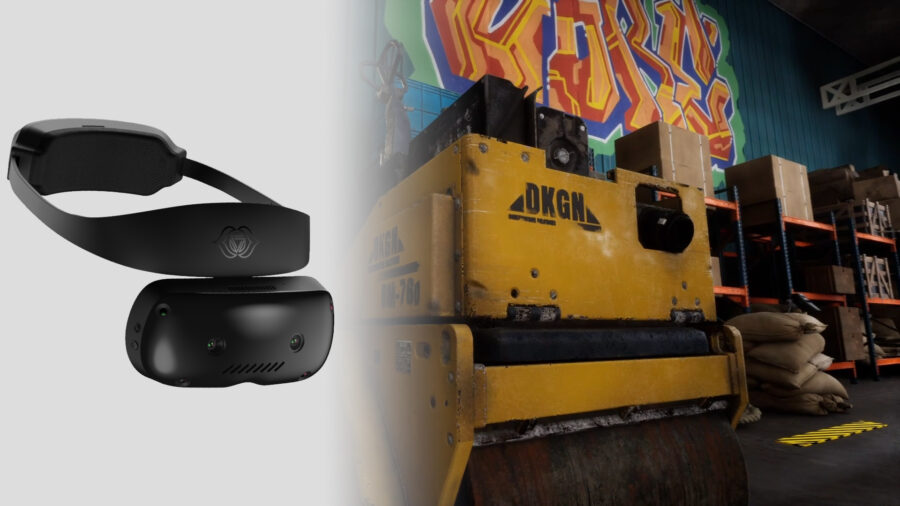
In Virtual Reality News
March 28, 2024 – AjnaLens, an Indian company pioneering in extended reality (XR) technology, has recently introduced its latest XR innovation at last week’s 2024 Game Developers Conference (GDC) 2024, with the launch of ‘AjnaHPSC’ (High Performance Spatial Computing) – an XR streaming solution that the company states marks “the most significant breakthrough in XR technology in 10 years.”
According to AjnaLens, AjnaHPSC represents a “quantum leap forward in XR,” as it empowers developers to create high-fidelity content for XR headsets that lack the required processing power to display such content, which in turn allows users to experience hyper-realistic XR content on untethered XR headsets.
Streaming high-end content through XR devices to ensure a seamless and immersive experience presents several challenges, including:
- Bandwidth Requirements: Streaming high-quality XR content requires significant bandwidth. There is a need to create an adaptive streaming and advanced compression and decompression algorithm;
- Latency: Even minor delays in content can cause motion sickness. Achieving low latency is challenging when content needs to be rendered, encoded, transmitted and decoded before being displayed, all within a second;
- Quality of Experience: The Ray Tracing and Path Tracing experiences are paramount in creating high-fidelity XR content. Balancing the trade-off between video quality and bandwidth consumption is crucial to prevent pixelation while optimizing streaming experiences;
- Interactivity and Real-Time Rendering: XR content involves real-time interactions and dynamic rendering based on user inputs. Streaming high-end VR content requires the delivery of pre-rendered scenes, and the synchronization of interactive elements in real-time.
In order to enable the streaming of high-quality content through XR devices with limited computational power, AjnaLens is aiming to tackle some of these key challenges head-on.

For instance, for bandwidth requirements, the company stated that its advanced streaming algorithm and techniques help to mitigate bandwidth constraints, enabling a more seamless delivery of XR content. AjnaHPSC is also capable of achieving ultra-low latency, according to the company, minimizing the delay between user actions and visual feedback.
For enhanced realism, AjnaHPSC allows XR developers to deliver highly immersive experiences by simulating spatial interactions, with dynamic lighting effects on standalone devices. For large-scale simulations XR developers can incorporate advanced features such as accurate physics-based scenarios, which open new avenues for applications in fields like healthcare training.
Additionally, AjnaHPSC enables developers to create content that can be streamed on standalone devices, thereby helping them monetize their content and expanding accessibility. For scalability, the company stated that its AjnaHPSC architectures are designed to scale efficiently, enabling the rendering of complex scenes with high-resolution textures, even on resource-constrained devices.
AjnaLens added that as AjnaHPSC technologies continue to evolve, it expects even more advancements, including improved graphics rendering, enhanced spatial audio and more. The company stated in an announcement: “AjnaHPSC marks a watershed moment in XR technology, poised to unleash a wave of innovation and redefine the possibilities of virtual reality. As AjnaLens continues to push the boundaries of spatial computing, the future of XR has never looked brighter.”
For more information on AjnaLens and its newly introduced AjnaHPSC solution for XR streaming, please visit the company’s website.
Image credit: AjnaLens
About the author
Sam is the Founder and Managing Editor of Auganix. With a background in research and report writing, he has been covering XR industry news for the past seven years.
